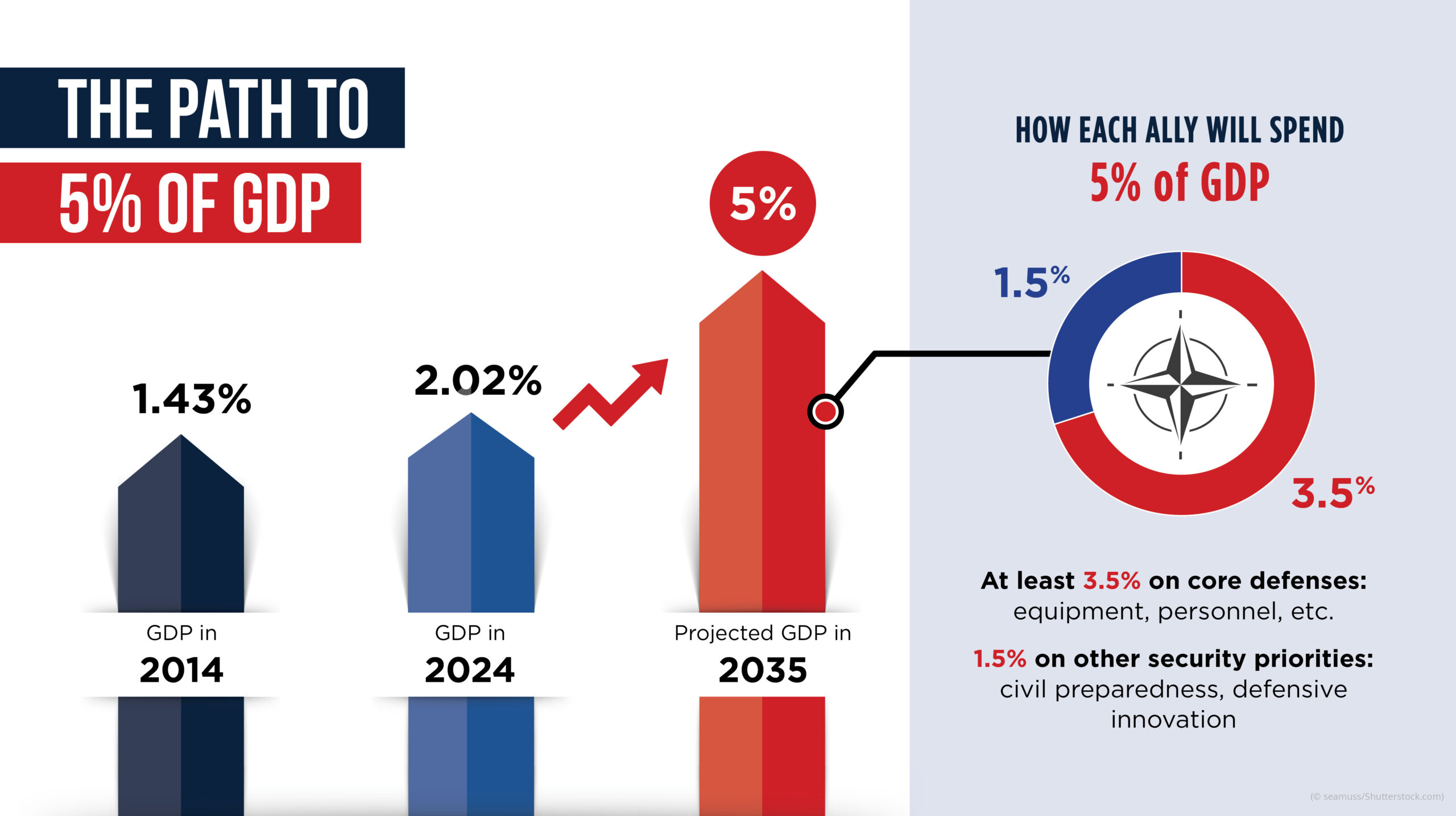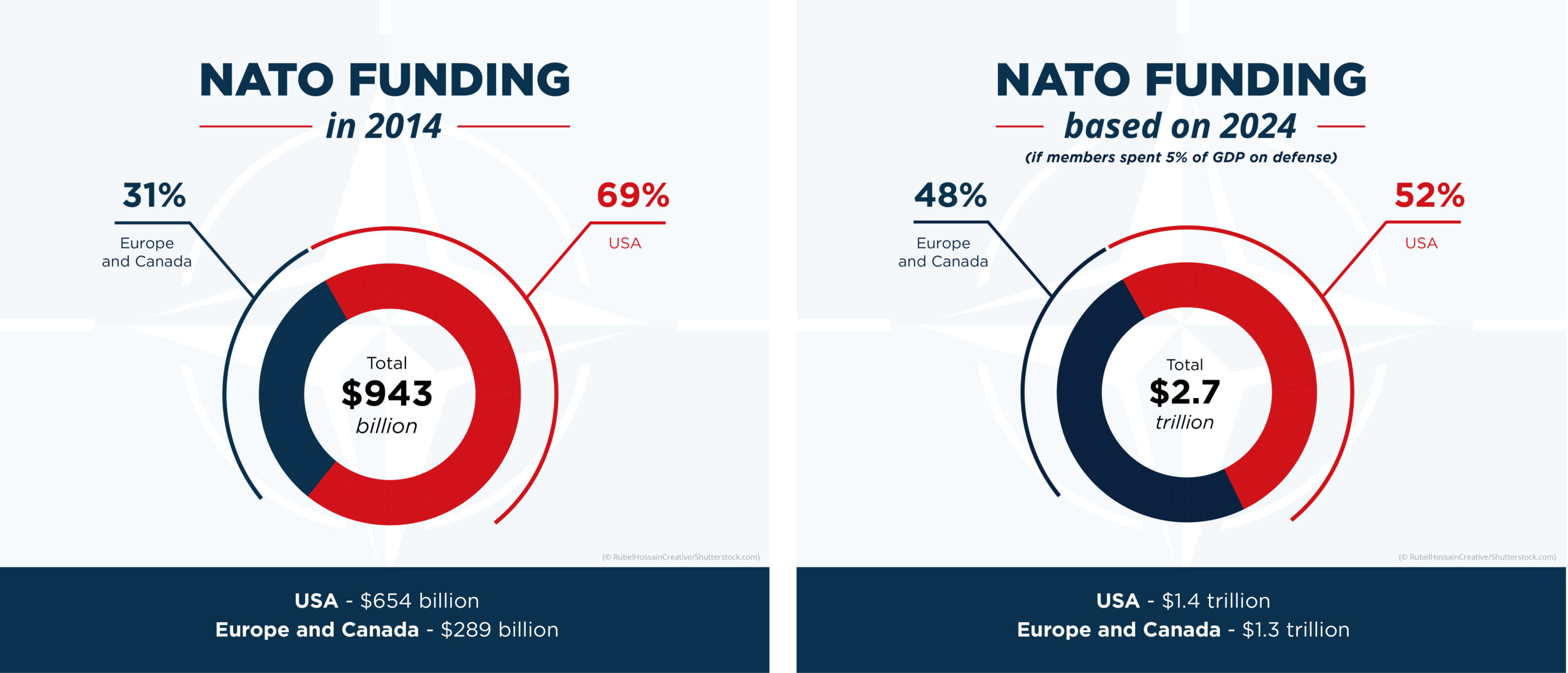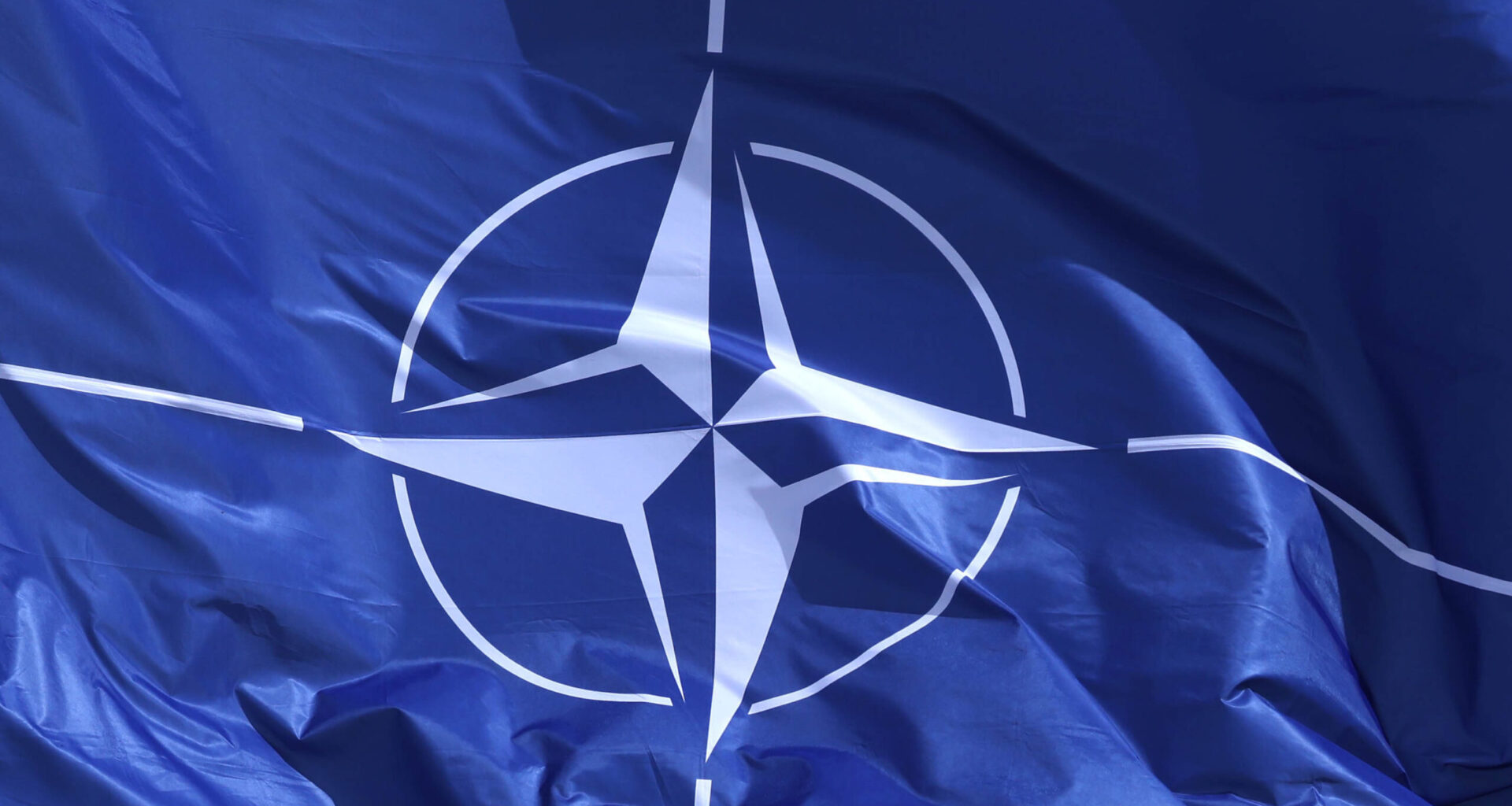NATO nations are committed to revitalizing the alliance by spending 5% of gross domestic product (GDP) on defense.
“NATO is now much better poised to project military, diplomatic and economic power,” says Secretary of State Marco Rubio in a recent op-ed, noting a stronger alliance deters future wars.
NATO’s founding Washington Treaty states that member nations “will maintain and develop their individual and collective capacity to resist armed attack.” The funding commitment reached at the June 2025 NATO Summit in the Hague more than doubles the previous 2% target and is expected to add $1 trillion to NATO’s defense resources annually when reached by 2035.
The 5%-of-GDP level will comprise at least 3.5% of each ally’s GDP to be spent on core defenses, including equipment and personnel, and 1.5% of their GDP toward civil preparedness, defense innovation and other security priorities.
 (State Dept./H. Efrem)
(State Dept./H. Efrem)
A dozen nations in Europe and North America formed NATO in April 1949 to ensure their collective defense after the devastation of World War II. Other European nations later joined, and the alliance has grown to 32 members. NATO security investments demonstrate a country’s commitment to common defense and strengthen the alliance’s credibility, the organization says.
Rebalancing for tomorrow
For years, most NATO member nations fell short of an earlier 2%-of-GDP spending pledge. In fact, by 2014, only three countries had reached the 2% level, and non-U.S. members were spending an average of 1.4% of GDP on defense.
Meanwhile, the United States in recent years has spent more than 3% of its GDP on defense, and in terms of dollars spent, twice as much as that spent by all other NATO nations combined. The disparity has effectively left the United States to defend Europe on its own, Rubio says.
 (State Dept./H. Efrem)
(State Dept./H. Efrem)
President Trump’s leadership has changed the outlook for NATO. During a two-year period in Trump’s first term, from 2017–2019, new NATO defense expenditures increased by $130 billion, the biggest spike in a generation.
After Trump’s first-term effort to highlight NATO members’ defense spending, those nations responded. In the decade ending in 2024, average spending by non-U.S. members rose from 1.4% to 2% of GDP.
This year’s call by the Trump administration for NATO members to invest 5% came as the Russian Federation and People’s Republic of China increased their military spending. NATO Secretary-General Mark Rutte has agreed that, “in a more dangerous world, 2% will not be enough to keep us safe. We need to spend considerably more.”
“Peace is not a gift, it is earned,” says U.S. Ambassador to NATO Matthew Whitaker, in supporting higher spending levels. “[Peace] is built through resolve, investment, and the unshakable belief that freedom must be defended.”
